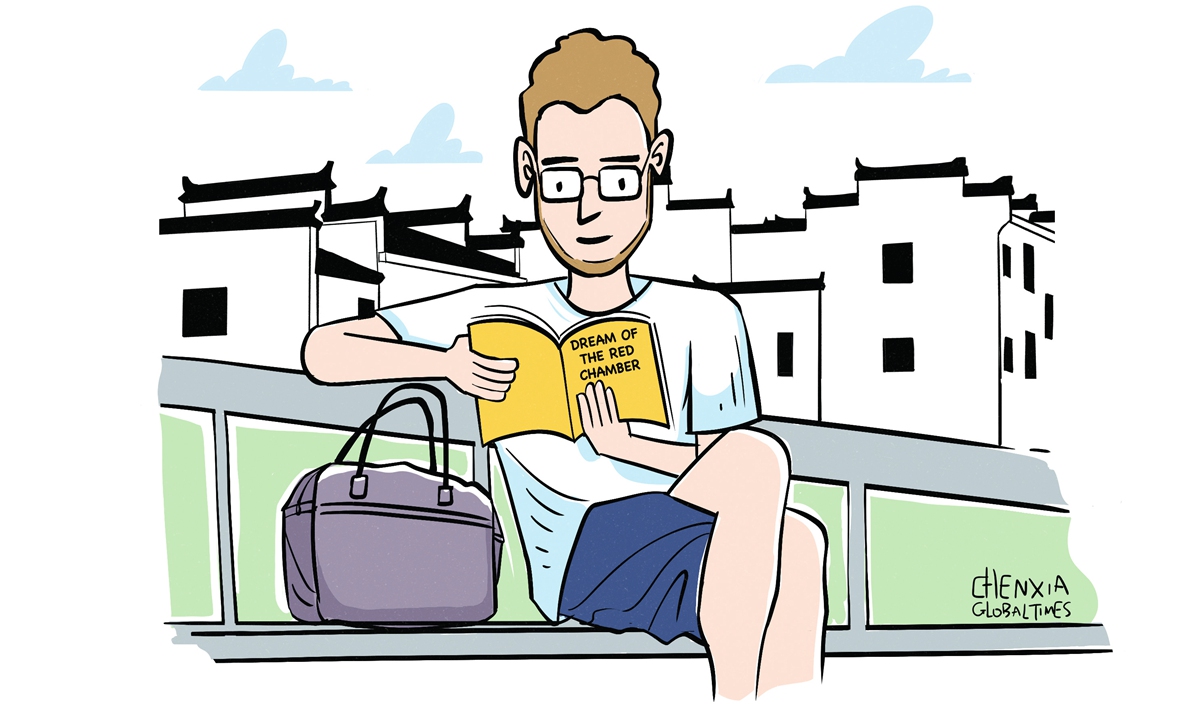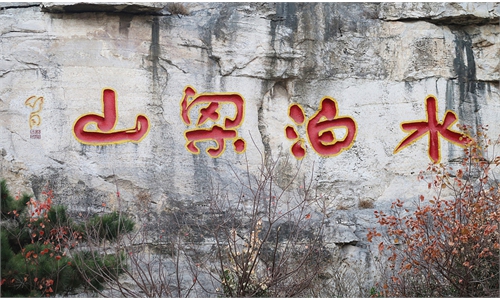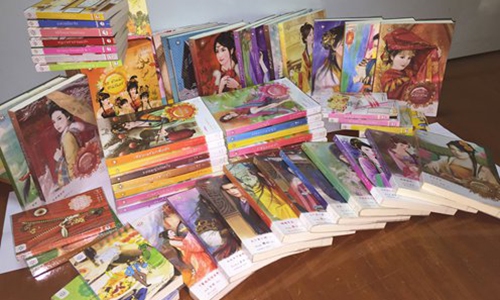ARTS / CULTURE & LEISURE
Unlocking charm of Chinese culture in foreigners’ eyes

Illustration: Chen Xia/Global Times
Fond of Chinese classical literature, he expresses his understanding of A Dream of the Red Chamber, one of the four great classics of Chinese literature, and Chinese poems through thousands of paintings. He is Canadian artist Brandon Collins-Green, or Lin Buran in Chinese. Often painting throughout the night, he has created more than 4,200 works. Living alone in a "shabby" 9-square-meter room that he rents for 350 yuan a month in the bustling downtown area of Nanchang, he has come a long way since he first came here in 2015 to pursue a master's and doctoral degree in ancient Chinese literature.
Brandon loves learning about the minimalist lifestyle of ancient Chinese people. He seldom reads modern literature because he thinks the content is too standardized and stereotypical. "So far, I have read the novel thoroughly three times, translated most of its poems, songs, lantern riddles, and dialogues into English, and completed over 1 million words of essays and 2,000 related paintings during my PhD studies. Even my doctoral dissertation centers on the novel. The greatest influence of A Dream of the Red Chamber on me was my outlook on life. I am a bit like Zhen Shiyin, a character in the novel. I have seen through all things in the world with little material desire," said Brandon.
Timur Kuvatov, director-general and editor-in-chief of the Kazakhstan Today News Agency, is a Chinese martial arts fan. He has won martial arts championships multiple times and also served as a coach for the Kazakhstan martial arts team.
"Chinese martial arts are a treasure of Chinese civilization. They are not just a sport but also embodies Confucian, Taoist, and Buddhist ideas, reflecting the philosophical concept of 'Harmony between Heaven and Humans,' for example. It reflects the Chinese way of dealing with people, their understanding of life, nature, and the universe," he said.
Vincent Cazeneuve, known as Wensen Qi in Chinese, is a French contemporary artist dedicated to lacquer creation. He settled down in Chongqing in 2009. His works have been exhibited in art institutions both in and outside of China, and private individuals have even collected some of them.
We have seen many people from around the world express their love for Chinese culture in various forms. What is the charm of Chinese culture that attracts these people?
First is its profoundness and inclusiveness. China has a long history and vast cultural heritage, which bears rich philosophical ideas, artistic treasures, and traditional skills. Chinese culture retains its traditional characteristics and actively absorbs the essence of other cultures, making it easier to accept and appreciate. Whereas modern technology has made aesthetics worldwide similar, which damages cultural diversity.
Second, distinct cultural background differences arouse intense curiosity, getting people interested in Chinese culture and wanting to learn more about the lifestyles, way of thinking, and values of the country. The significant difference between the East and West is that Eastern culture emphasizes "comprehension" more, while the West values "logic." This means Oriental "logic" is subtle and not as apparent as Western thinking. When we look at traditional Chinese paintings and Western oil paintings, we can find large areas of blank spaces appear in the former, while the latter is filled with colors and much less blank space. This indicates that traditional Chinese painting requires more association and imagination to appreciate and comprehend.
Third, Chinese culture embodies practical values. Focusing on harmony, balance, and coordination among people, its wisdom and creative thinking help achieve self-value and provide unique perspectives and methods for solving universal problems.
Cross-cultural communication brings about benefits. We can broaden our horizons, expand our thinking, and enrich our life experiences. Sometimes, people from different cultures can establish deep emotional connections and enhance empathy. In addition, it also enables us to understand our own culture and identity better. Through comparison and conversation, we reflect upon our own culture, draw on the strengths of others, advance further development, and build a more inclusive and harmonious world.
The author is a faculty member with the School of Applied Economics, Renmin University of China. life@globaltimes.com.cn



